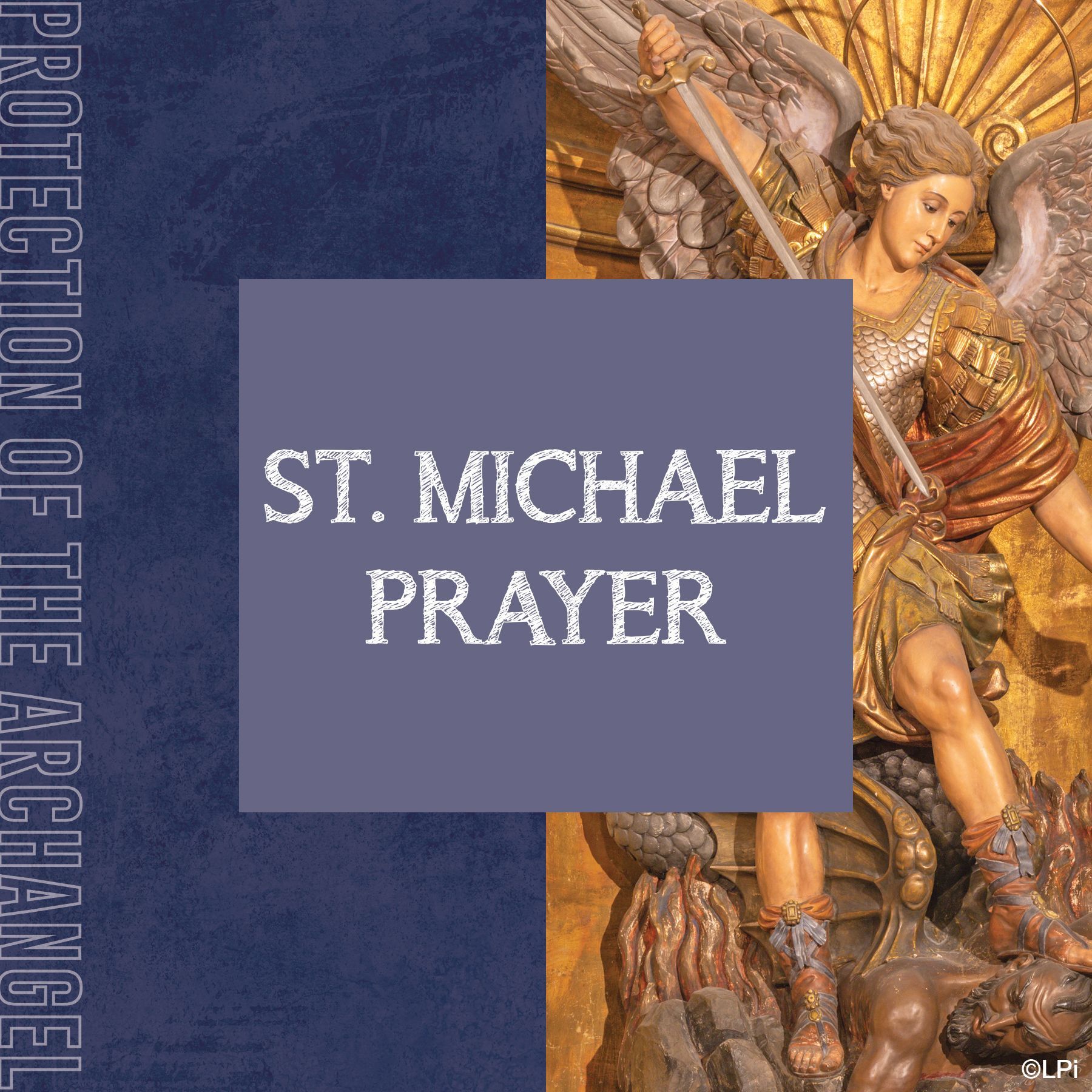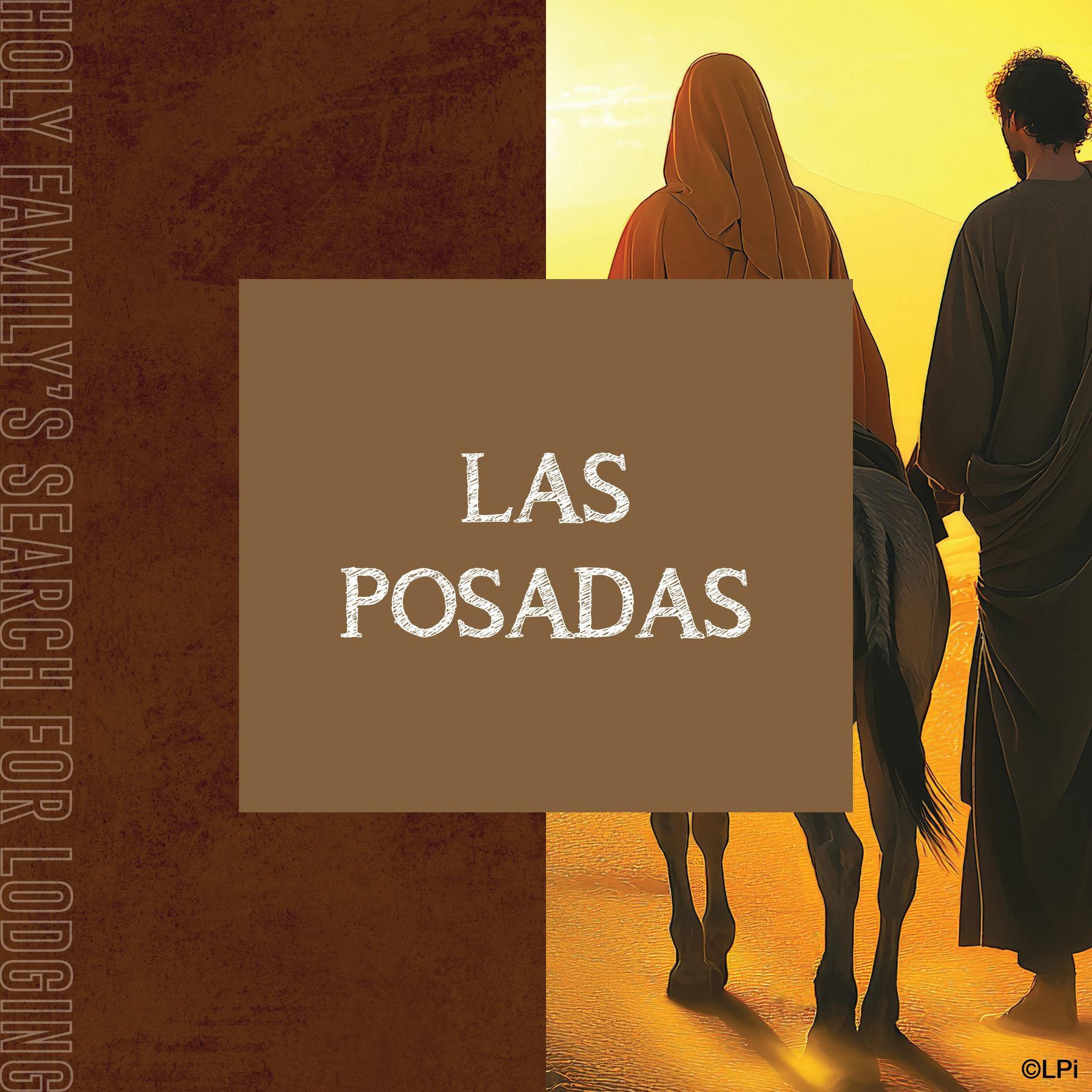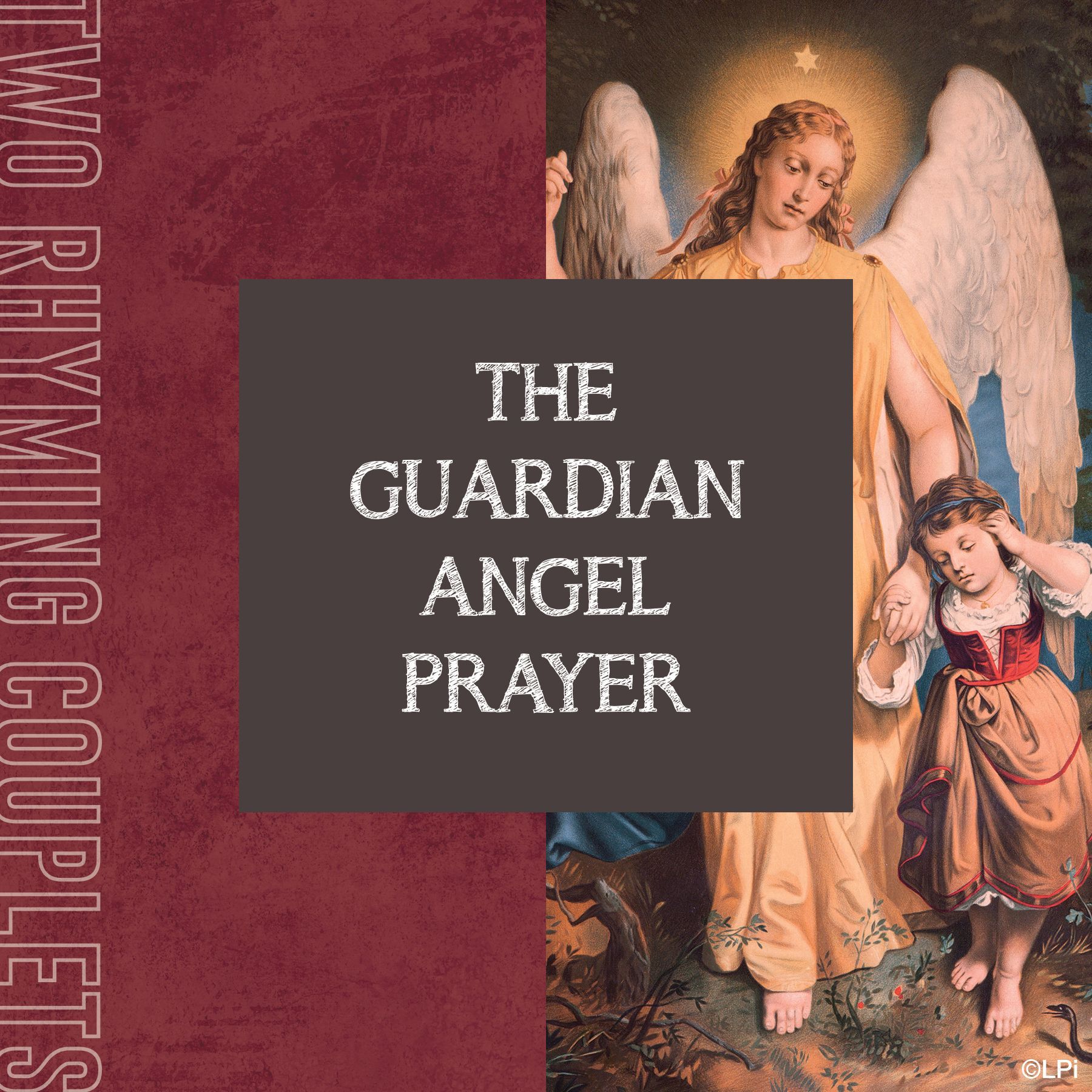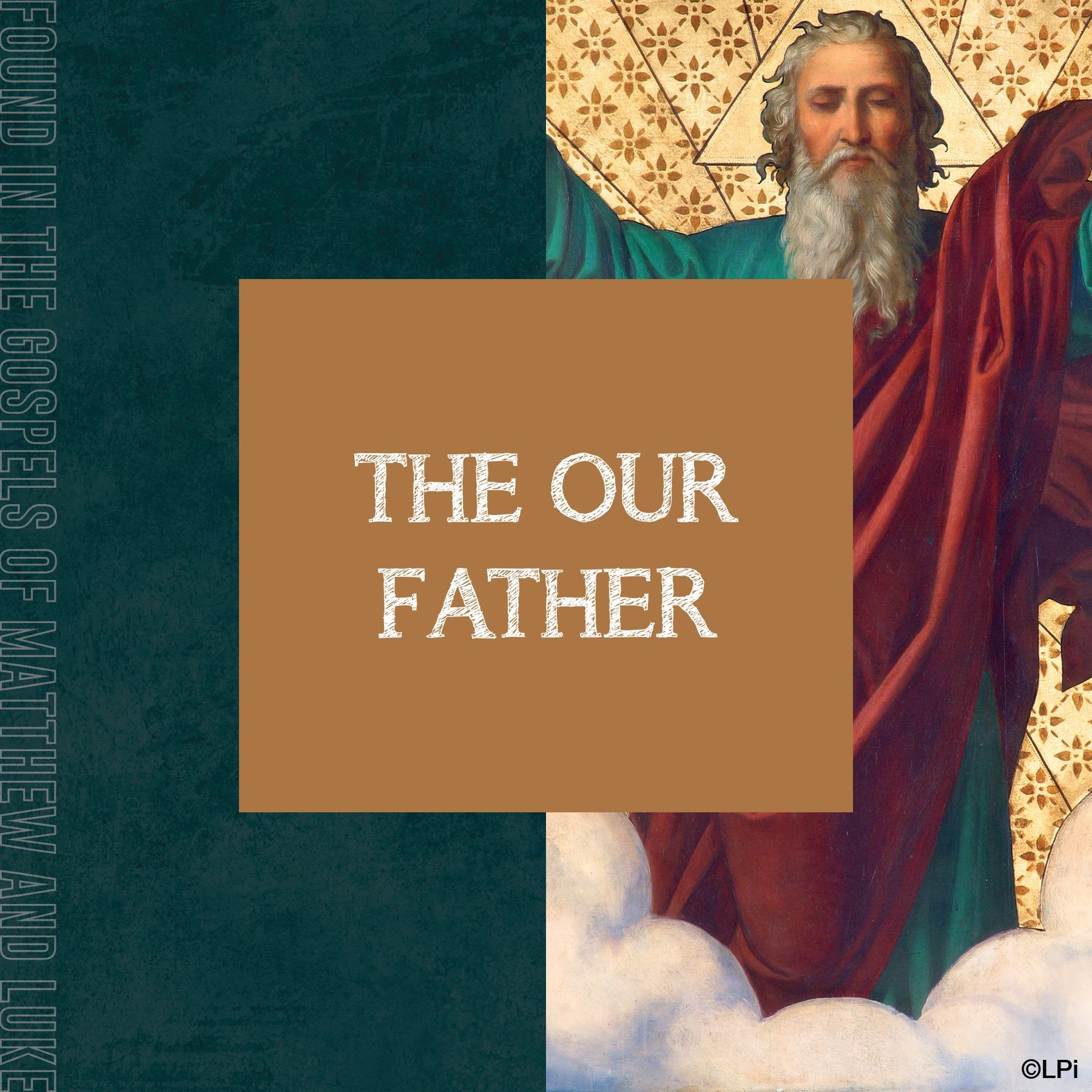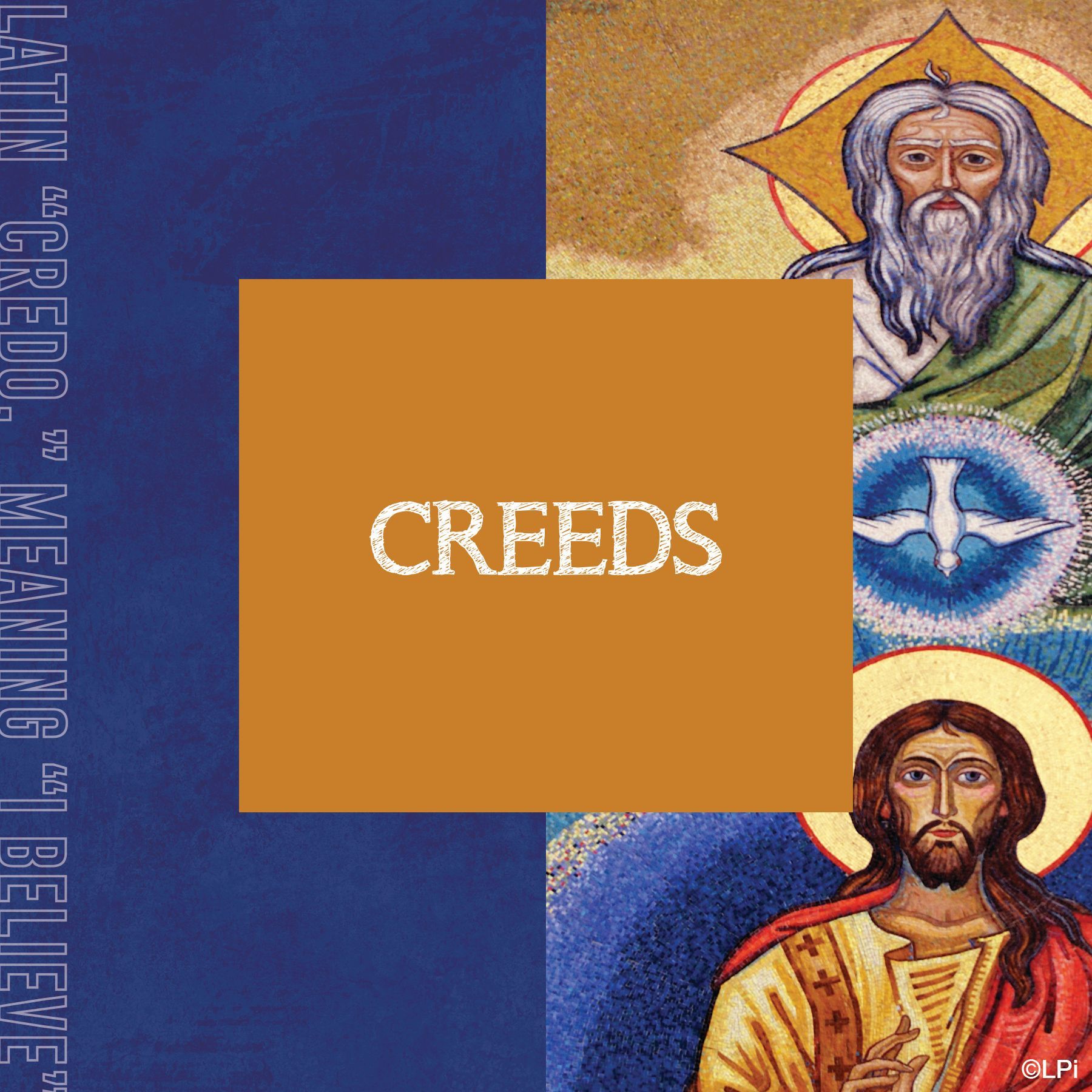Weekly Devotions
Devotions Explained
December 21, 2025
Devotions Explained
Las Posadas
Mini Explanation
Las Posadas is a Mexican tradition which recreates the Holy Family’s search for lodging in Bethlehem. This nine-day devotion anticipates the birth of Jesus Christ, who seeks refuge in the heart of every man and woman.
Las Posadas, Explained!
Las Posadas, typically celebrated between Dec. 16 and Dec. 25, is a Mexican tradition which recreates the Holy Family’s search for lodging in Bethlehem. A novenario, or a devotion which extends over a period of nine days, Las Posadas is a celebration of anticipation for the birth of Jesus Christ, who seeks refuge in the heart of every man and woman.
Each night of Las Posadas, a couple portraying Mary and Joseph knocks on the doors of different homes looking for a place to stay. Traditionally, the Holy Family is accompanied by a procession of people singing hymns and bearing candles who stand outside the home as they are denied entry again and again. Finally, they come to the “inn,” the house or church that welcomes them. Carols are sung, a feast is enjoyed and star-shaped piñatas are broken open.
Still practiced in Mexico today, Las Posadas has also become an important cultural and spiritual touchstone for communities of Mexican immigrants who have moved abroad.
December 14, 2025
Devotions, Explained!
Our Lady of Guadalupe
Mini Explanation
Our Lady of Guadalupe appeared to Juan Diego in Mexico City in 1531. The Patroness of the Americas, Our Lady of Guadalupe is a beloved symbol of faith, motherhood and identity. Her feast day is Dec. 12.
Our Lady of Guadalupe, Explained!
The four apparitions of Our Lady of Guadalupe took place in December 1531, when Juan Diego, an indigenous convert to the Catholic faith, encountered a woman dressed as an Aztec princess on Tepeyac Hill in present-day Mexico City. The woman, who was pregnant, spoke to him in his native language. She identified herself as the Mother of God.
Over the next four apparitions, Our Lady requested that Juan Diego implore the local bishop to build a church on the hill, and performed miracles to prove her identity. Through one of the miracles, she imprinted her image onto Juan Diego’s tilma, or cloak; the tilma bearing that image can still be viewed today at the basilica which now stands on the site of the apparition.
Our Lady of Guadalupe is venerated as the Patroness of the Americas, and she is beloved worldwide as a symbol of motherhood, faith and identity. Her feast day is Dec. 12
December 7, 2025
Devotions Explained
St. Nicholas
Mini Explanation
St. Nicholas is sometimes merged with the modern figure of Santa Claus in the collective imagination. But St. Nicholas was a real-life bishop, a follower of Jesus whose example of Christian self-giving endures hundreds of years after his death.
St. Nicholas, Explained!
St. Nicholas was a fourth-century Christian bishop who lived in modern-day Turkey. There is minimal historical scholarship dating to the period of his life, but stories and traditions that developed after his death emphasize his profound spirit of generosity, especially towards the poor.
One particularly famous oral tradition tells that St. Nicholas saves three young women from a life of destitution and ruin by secretly giving them a dowry so they could marry. His popularity increased in the centuries following his death, and by the medieval period he was a beloved model of Christian charity invoked in a particular way during the seasons of Advent and Christmas.
On his feast day, Dec. 6, children often wake up to find small gifts or treats in their shoes or Christmas stockings, a tradition which has variations across different ethnic groups. In the United States, St. Nicholas gift-giving practices are especially popular in places where large numbers of German and Dutch immigrants settled.
November 30, 2025
Devotions, Explained!
St. Andrew Christmas Novena
Mini Explanation
The St. Andrew Christmas novena is a prayer said from Nov. 30 through Christmas Eve. St. Andrew was the first disciple of Christ, and in saying this prayer Christians follow his example of prescient faithfulness throughout the days of Advent.
St. Andrew Christmas Novena, Explained!
The St. Andrew Christmas novena is a prayer said from November 30, the Feast of St. Andrew, through Christmas Eve. Traditionally, it is recited 15 times each day.
The Gospel of John tells us that St. Andrew was a disciple of John the Baptist who heard John call Jesus “the Lamb of God.” Andrew followed Jesus, curious about him, and realized that he was the Messiah, so he quickly found his brother, Peter, and the two became the first disciples.
In praying this novena, Christians follow the example of Andrew’s prescient faithfulness throughout the season of Advent.
The prayer of the novena reads: “Hail and blessed be the hour and moment in which the Son of God was born of the most pure Virgin Mary, at midnight, in Bethlehem, in the piercing cold. In that hour vouchsafe, I beseech Thee, O my God, to hear my prayer and grant my desires through the merits of Our Savior Jesus Christ, and of His blessed Mother. Amen.”
Saint Andrew Christmas Novena Prayer
Hail and blessed be the hour and moment
in which the Son of God was born
of the most pure Virgin Mary,
at midnight, in Bethlehem, in piercing cold.
In that hour vouchsafe, I beseech Thee,
O my God, to hear my prayer and grant my desires,
(mention your request)
through the merits of Our Savior Jesus Christ,
and of His Blessed Mother.
Amen.
November 23, 2025
Jesse Tree
Mini Explanation
The Jesse Tree is an Advent practice which recounts the history of salvation by tracing the lineage of Christ — the foretold “shoot from the stump of Jesse” who will bring peace and unity to the people of God (Isaiah 11:1).
Jesse Tree, Explained!
The Jesse Tree is an Advent practice which recounts the history of salvation by tracing the lineage of Christ — the foretold “shoot from the stump of Jesse” who will bring peace and unity to the people of God (Isaiah 11:1).
In a way, creating a Jesse tree is the telling of one big story — the redemption of man — through the telling of many smaller stories — the fall of Adam, God’s promise to Abraham, the wandering of the Israelites, the greatness of David and the humble submission of Mary. A Jesse tree is adorned with symbols of these various people and stories, with the earliest ones hung from the topmost branches, progressing downward.
There are different versions of the Jesse Tree featuring different Old Testament figures and stories, but all begin with Adam and end with the birth of Jesus. It is an easy tradition to practice at home — all you need is a tree, paper, markers, scissors, string and a Bible.
November 16, 2025
Advent Wreath
Mini Explanation
An Advent Wreath consists of a circle of evergreen and four candles, one for each week of Advent. Three of the candles are purple; one is rose, representing Gaudete Sunday, a time of rejoicing at the closeness of Christmas.
Advent Wreath, Explained!
The Advent Wreath as we know it today is a modern spin on an ancient practice — or rather, several of them.
Christians have always utilized candles to illustrate the metaphor of Christ as the “great light” shining on a people waiting in darkness (Isaiah 9:2). Historians tell us that pre-Christian societies in Europe also viewed candles as symbolic of the coming light of spring, and may have used wreaths of natural material along with these candles. Traditions and rituals surrounding an “Advent Wreath” are often thought to have originated in the Lutheran tradition in 16th-century Germany. Today, Advent Wreaths are a practice embraced by most Christians in the Western world.
An Advent Wreath consists of a circle of evergreen and four candles, one for each week of Advent. Three of the candles are purple; one is rose, representing Gaudete Sunday, a time of rejoicing at the closeness of Christmas. In Catholicism, Advent Wreaths are blessed on the First Sunday of Advent. For Advent Wreaths in private homes, it is appropriate for a family member to perform the blessing.
November 9, 2025
Simbang Gabi
Mini Explanation
Simbang Gabi is a Filipino tradition of nine early-morning votive Masses offered in anticipation of Christmas. Celebrations follow Mass, where delicacies like baked rice cakes and breakfast rolls are enjoyed.
Simbang Gabi, Explained!
Simbang Gabi is a Filipino tradition through which Advent expectation realizes the fulfillment of Christmas joy. During Simbang Gabi, early morning Masses are offered over a series of nine days leading up to Christmas. Celebrations follow Mass, where delicacies like baked rice cakes and breakfast rolls are enjoyed.
Traditionally, Simbang Gabi Masses are held before dawn, a practice that originated in the 17th century in the Philippines when most of the faithful had to work the rest of the day in the fields.
During Mass, the priest wears white vestments and the Gloria is sung, a practice for which the Holy See has given special permission. Traditionally, the nine-day sequence ends with Midnight Mass on Dec. 24.
The tradition has been adapted to fit the needs of Filipino communities throughout the world, and the Masses might not even be offered in the morning at all, but in the afternoon or evening.
November ,2 2025
Prayer for the Dead
Mini Explanation
God is not subject to the constrictions of time as we understand them. Our prayers for the dead are, like our prayers for the living, an expression of charity and the unity which exists between all members of the Body of Christ.
Prayer for the Dead, Explained!
It may seem strange to pray for someone who is already dead and who, according to our earthly reckoning of time, has already undergone judgment. But God is not subject to the constrictions of time as we understand them. Our prayers for the dead are, like our prayers for the living, an expression of charity and the unity that exists between all members of the Body of Christ.
Prayer for the dead is a practice which not only predates Catholicism but predates Jesus Christ, as we see in the Second Book of Maccabees (2 Maccabees 12:42-45).
“By virtue of the ‘communion of saints,’ the Church commends the dead to God’s mercy and offers her prayers, especially the holy sacrifice of the Eucharist, on their behalf,” says the Catechism of the Catholic Church (CCC 1055).
The most common Catholic prayer for the dead is as follows: “Eternal rest grant unto them, o Lord, and let perpetual light shine upon them. May the souls of the faithful departed rest in peace.”
October 26, 2025
The Guardian Angel Prayer
Mini Explanation —
Often one of the first prayers taught to children, the Guardian Angel Prayer consists of two rhyming couplets invoking the protection of one’s guardian angel. Its exact authorship is unknown, but it originated in the medieval period.
The Guardian Angel Prayer, Explained!
The Guardian Angel Prayer, also known as the Angel of God Prayer, invokes the protection of one’s guardian angel. Often one of the first prayers taught to children, it consists of two rhyming couplets: “Angel of God, my guardian dear, to whom God’s love commits me here, ever this day be at my side, to light and guard, to rule and guide.”
The exact authorship of this prayer is unknown. Scholars previously attributed it to St. Anselm of Canterbury, though many now believe a version composed by Reginald of Canterbury in his “Life of Malchus” serves as the prayer’s inspiration.
Guardian Angels are referred to in Scripture in the Book of Daniel (Dan. 12:1), the Gospel of Matthew (Matthew 18:10) and the Psalms (91:10-13). “From its beginning until death, human life is surrounded by their watchful care and intercession,” says the Catechism of the Catholic Church (CCC 336).
October 19, 2025
The Our Father
Mini Explanation
The Our Father, also known as The Lord’s Prayer, is found in the Gospels of Matthew and Luke. Universally beloved in most traditions of Christianity, its words are those of Jesus Christ himself as he answers his disciples’ queries on how best to pray.
The Our Father, Explained!
The Our Father, also known as The Lord’s Prayer, is found in the Gospels of Matthew and Luke. Universally beloved in most traditions of Christianity, its words are those of Jesus Christ himself as he answers his disciples’ queries on how best to pray.
The version presented in the Gospel of Matthew is longer and more detailed than that which is contained in the Gospel of Luke. Both versions instruct the faithful to address God as “Father,” to pray for the coming of His kingdom, to rely on His providence, and to embrace a spirit of forgiveness towards others, in the hope that we ourselves will be forgiven (Matthew 6:9-13, Luke 11:2-4). This last element, forgiveness, is also emphasized by Jesus in the Gospel of Mark (Mark 11:25) as an essential part of all prayer.
The Catechism quotes Tertullian when it calls the Our Father “the summary of the whole Gospel.
October 12, 2025
Creeds
Mini Explanation — Great for social media or in your bulletin
A creed (from the Latin “credo,” meaning “I believe) is a summary of the most important articles of faith agreed upon by a group of people who hold them as truth. Tradition has given us not just the Apostles’ and Nicene Creeds, but many more.
Creeds, Explained!
Most Catholics can recite at least portions of the Nicene and Apostles Creed by heart — but though these are perhaps the best-known two creeds of modern times, Church tradition has yielded many more.
A creed (from the Latin “credo,” meaning “I believe) is a summary of the most important articles of faith agreed upon by a group of people who hold them as truth. Tradition attributes authorship of the Apostles’ Creed to Christ’s 12 Apostles. The Nicene Creed originated at the first worldwide ecumenical council in Nicaea in 325 AD. The Athanasian Creed is another famous statement of belief approved by the Church, this one focusing particularly on the matter of the Holy Trinity.
All approved creeds fulfill Christ’s Great Commission to “make disciples of all nations” (Matthew 28:19) and the need for Christians to “always be prepared to make a defense to anyone who calls you to account for the hope that is in you” (1 Peter 3:15).
October 6, 2025
God is Good, All the Time
Mini Explanation
This popular phrase is an affirmation of God’s faithfulness amidst the trials of life, a theme that is presented again and again in Scripture: come what may, God will be with us.
Good is Good, All the Time: Explained!
Perhaps you have been a member of a congregation to whom the pastor says, expectantly, “God is good!” The congregation responds, faithfully, “All the time.” In turn, the speaker repeats: “All the time.” And the congregation affirms: “God is good!”
A collective affirmation of God’s faithfulness amidst the trials of life, this refrain communicates a theme presented again and again in Scripture: Come what may, God will be with us.
There is no official consensus on the origins of this saying, though it is often associated with African Christianity. Whatever this saying’s roots, its message is truth: “For the Lord is good; His mercy is everlasting; and His truth endures to all generations,” says Psalm 100:5. “Give thanks to the Lord, for He is good! For His mercy endures forever,” echoes 1 Chronicles 16:34. Jesus confirms this in Matthew 28:20: “I am with you always, even to the end of the age.”
St. Michael Prayer
Mini Explanation —
The prayer to St. Michael, composed by Pope Leo XIII, invokes the protection of the archangel Michael in the ongoing spiritual battle for the souls of all mankind. It is commonly said at the end of the rosary and by some parishes after the conclusion of Mass.
St. Michael Prayer, Explained!
The prayer to St. Michael invokes the protection of the archangel Michael in the ongoing spiritual battle for the souls of all mankind. This prayer was composed by Pope Leo XIII and its use was instituted in 1886 at the end of Low Mass, a tradition which continued until the liturgical reforms of the Second Vatican Council. A popular story regarding its origin claims that the Pope wrote this prayer after having a vision of demonic spirits descending on Rome.
Michael is mentioned as one of God’s seven archangels in the Book of Enoch and is presented by Revelations 12:7-12 as the warrior angel who cast Satan from heaven. He is therefore traditionally venerated as a protector against the forces of evil and a guardian of the Church.
The Prayer to St. Michael is still commonly said at the end of the rosary and by some parishes after the conclusion of Mass.
